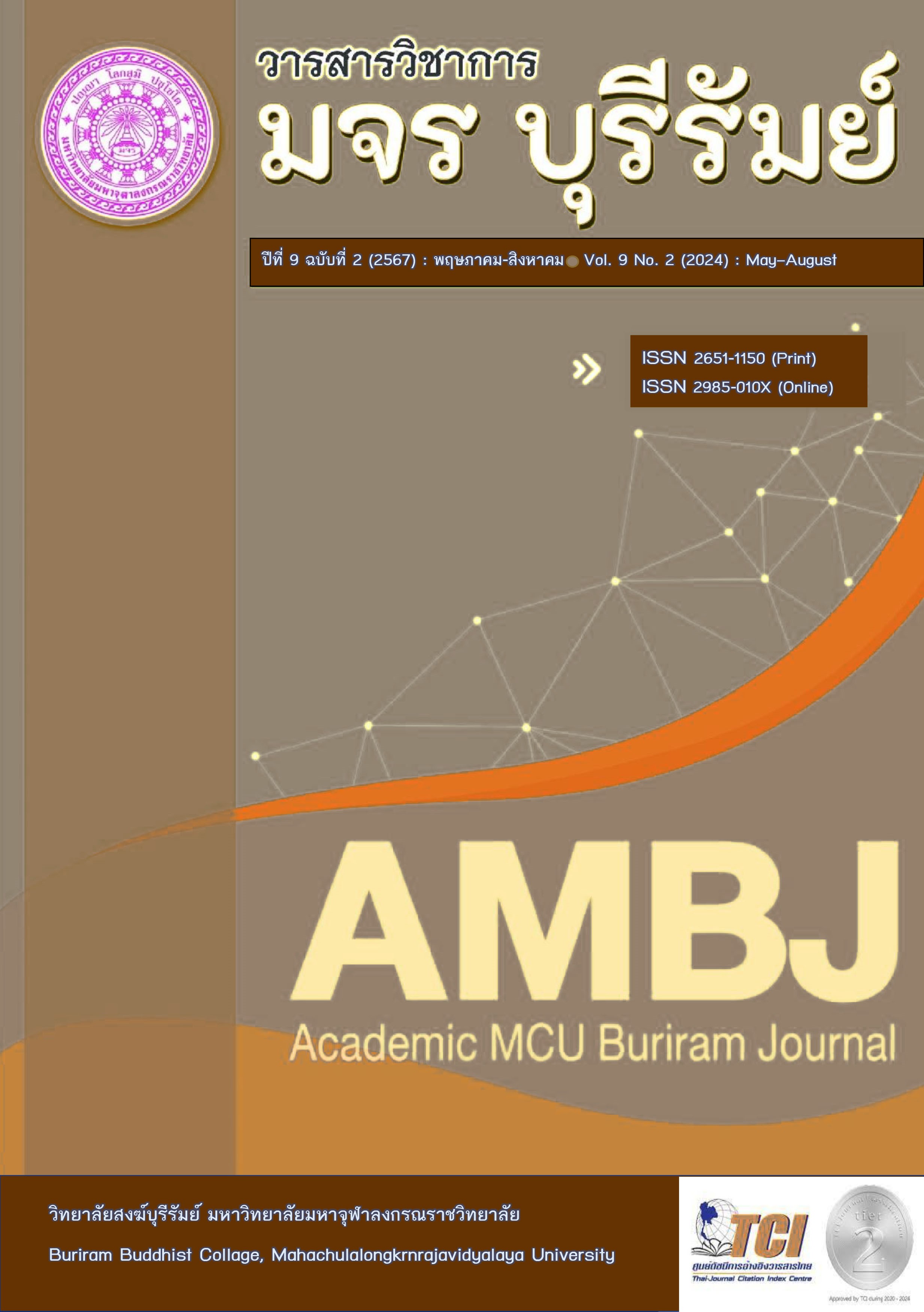Using Revised Bloom’s Taxonomy to Evaluate Reading Questions in EFL Textbook in Thailand
Keywords:
Reading Questions, Revised Bloom’s Taxonomy, Critical Thinking, Lower Order Thinking Skills (LOTS), Higher Order Thinking Skills (HOTS)Abstract
This study analyzed reading questions for the development of critical thinking in Action 1, 2, and 3 English Language textbooks for grade seven, eight, and nine students at a catholic school located in the northeastern part of Thailand. The study employed content analysis to investigate and assign each of reading questions at the end of all the reading texts in the three English textbooks according to the levels of Revised Bloom’s Taxonomy.
The research results found that:
The analysis revealed that the reading questions in Action 1, 2, and 3 covered all six levels of Revised Bloom’s Taxonomy. Among a total of 998 reading questions across the three textbooks, the majority (723 questions or 72.44%) were categorized under the lower order thinking skills (LOTS) of Revised Bloom’s Taxonomy. In contrast, 275 questions (27.56%) fell under the higher order thinking skills (HOTS). However, the percentage of reading questions in LOTS decreased, while the percentage of reading questions in HOTS increased, in the higher series of Action textbooks. Consequently, although Action 1, 2, and 3 can promote critical thinking, they do so with certain limitation.
References
Anderson, L. W., & Krathwohl, D. R. (2001). A taxonomy for learning, teaching, and assessing: A revision of Bloom's taxonomy of educational objectives (Complete edition). Addison Wesley Longman, Inc.
Bailin, S., & Siegel, H. (2002). Critical thinking. In N. Blake, P. Smeyers, R. Smith, & P. Standish (Eds.). The Blackwell guide to the philosophy of education (pp. 181-193). Blackwell.
Cottrell, S. (2011). Critical thinking skills: Developing effective analysis and argument (2nd ed.). Palgrave Macmillan.
Halpern, D. F. (2014). Critical thinking across the curriculum: A brief edition of thought & knowledge. Routledge.
Irawan, A., & Diptoadi, V. L. (2022). Using the revised Bloom’s taxonomy to analyze the reading comprehension questions in EFL textbook for year X of high school. Magister Scientiae, 50(1), 59-68.
Judge, B., Jones, P., & McCreery, E. (2009). Study skills in education: Critical thinking skills for education students. SAGE Publications, Inc.; Learning Matters.
Kwangmuang, P., Jarutkamolpong, S., Sangboonraung, W., & Daungtod, S. (2021). The development of learning innovation to enhance higher order thinking skills for students in Thailand junior high schools. Heliyon, 7(6), e07334.
Malinda, E., & Daulay, S. H. (2023). The urgency of first language acquisition in three-year-olds. Proceedings. English Language and Literature International Conference (ELLiC).
Mulnix, J. W. (2012). Thinking critically about critical thinking. Educational Philosophy and Theory, 44(5), 464-479.
Rudd, R. D. (2007). Defining critical thinking. Techniques: Connecting Education & Careers, 82(7), 46-49.
Trilling, B., & Fadel, C. (2009). 21st century skills: Learning for life in our times. San Francisco, CA: John Wiley & Sons.
Wagner, T. (2010). The global achievement gap: Why even our best schools don't teach the new survival skills our children need and what we can do about it. New York, NY: Basic Books.
Downloads
Published
How to Cite
Issue
Section
License
Copyright (c) 2024 Academic MCU Buriram Journal

This work is licensed under a Creative Commons Attribution-NonCommercial-NoDerivatives 4.0 International License.
ทัศนะและความคิดเห็นที่ปรากฏในบทความวารสารฉบับนี้ถือเป็นความรับผิดชอบของผู้เขียนบทความนั้น ไม่ถือเป็นทัศนะและความรับผิดชอบของบรรณาธิการ





